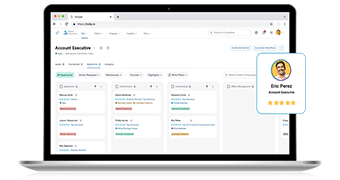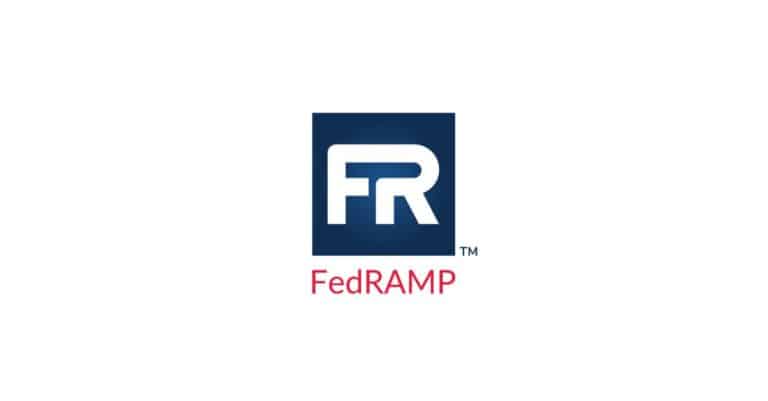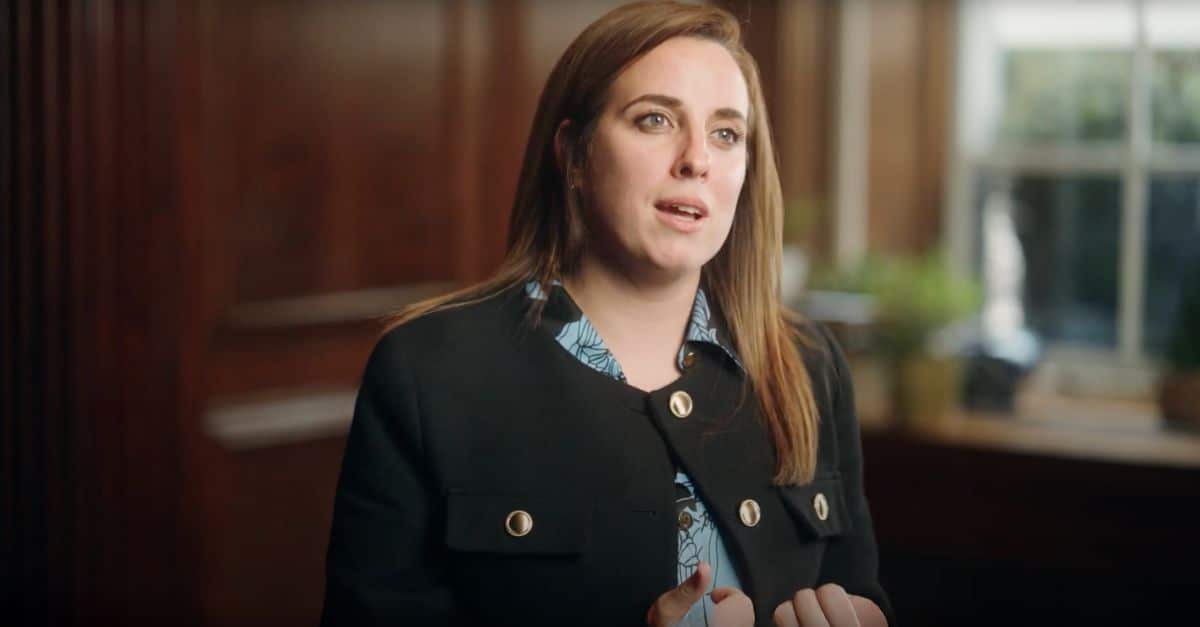- We launched our Talent Table series this year, inviting top HR leaders and strategists to share advice and best practices in HR, with a focus on how new technologies, like AI, can help.
- Embracing new ways of work to meet the demands of today’s workforce requires mindset shifts and a willingness to try something new.
- Talent intelligence is here to complement, not replace, HR’s ability to source top talent internally and externally
No topic is too difficult when you have a seat at the Talent Table.
Our monthly roundtable discussion webinar series has spent the year tackling the toughest HR challenges with real strategies and advice that works. From how to hire top talent to upskilling your workforce and what the C-suite is looking for from HR, our guests have shared a wealth of information to help everyday HR practitioners gain an edge
In case you missed any of it, we’ve picked our best six pieces of advice from our favorite discussions this year.
Bill Pelster, Co-founder of The Josh Bersin Company, says HR needs to focus on the problem they need to solve to gain C-suite approval, not just the tech.
1. Identify the problems to solve in your organization
Organizations benefit when HR and the C-suite are aligned, but what are executives looking for from HR teams? In an effort to recalibrate the discussion, Chris Norbury, CEO of E.ON, and Bill Pelster, Co-founder of The Josh Bersin Company, joined us to share their thoughts.
Pelster said the key isn’t convincing the C-suite that simply focusing on skills or new tech is the way. You must show them what problem it’s going to solve: “Lead with solving the problem and bringing candidates [in], as opposed to, hey, we’re going to stop looking at them from the old way.”
Watch “Unlocking what today’s executives need from HR” on demand.
Hung Lee, Editor of Recruiting Brainfood, suggests giving candidates more feedback when completing assessments can keep them engaged for future opportunities.
2. Give candidates feedback in interview process
If you’re a recruiter, you spend a lot of time screening candidates for roles, but what happens to those candidates when they’re the silver medalist who aren’t offered the job but could still be a great fit?
They land in your candidate graveyard.
And it’s a graveyard worth revisiting to resurface talent and give them new life. One way to do that, says Hung Lee, Editor of Recruiting Brainfood, is to give better feedback to your candidates, especially in assessments.
“You don’t necessarily need to give them an outcome,” he said, “but you deliver them some value back from the energy they put in. [They’ve] just gone through this test. I’m going to come back to you with a report which breaks down how you bench against everyone else, and then [show] how you compare against your demographic cohort, and how we rank your chances going forward. You do that, and then suddenly people think, ‘OK, great,I’ve got something useful here in exchange for my effort.’ ”
Watch “Bring your talent back from the dead” on demand.
Michael Keane, Managing Partner of The Sierra Institute, LLC, talks about how AI can help surface internal candidates with diversity in mind.
3. Use AI to ensure diversity principles are integrated
Commitment to diversity is important to creating a safe and fair workplace for all, and AI can be an ally in this process. AI, when responsibly and ethically deployed, can reduce bias, promote fairness, and ensure that diversity principles are integrated into every state of the talent process.
It can also help identify internal candidates for new roles, says Michael Keane, Managing Partner of The Sierra Institute, an organization of senior HR leaders committed to the advancement of organization, community, and themselves.
“One of the things I learned over 25-plus years in corporations is [that] the answers almost always exist inside the organization,” Keane said. “The difficulty is figuring out which questions to ask and then how to mine those insights.
“AI offers a huge quantum step forward in that process,” he continued. “First of all, it enables you to ask a lot more questions simultaneously. Secondly, it allows you to get access to quality data-driven responses that can form hypotheses that you can then pursue. It doesn’t give you the perfect answer. It doesn’t give you the complete answer, but it helps you guide your thinking about where to go next.”
Adrian Boruz, Senior Global Product Portfolio Manager – HR Systems at Vodafone, talks about how to encourage your workforce to adopt AI successfully.
4. Train your workforce to be AI ready
There’s a lot of misinformation around AI and its impact on workforces, so Isabel Gadeo, Senior Manager at Deloitte, and Adrian Boruz, Senior Global HR Product Portfolio Manager at Vodafone, joined us to demystify what real AI-native first talent intelligence does, how it can positively impact your workforce, and how to vet AI vendors.
Boruz said there’s one thing all organizations need to do to get their workforce AI ready.
“There’s [an] element that cuts across all areas of the business, which is about training people in the company to be AI ready, “ he said. “[You need to be] making sure that you’ve got your curriculum right for people to access at different levels. There might be a different level of expertise for different types of roles.
“Overall, [you need to be] able to communicate and offer to people any risks or strategies for how their role might be different so they can get ready for the jobs of the future.”
Watch “How AI can help — not harm — your talent practices” on demand.
Jacob Bradburn, Senior Manager, Accenture Strategy, Talent & Organization, talks about why implementing AI is a key opportunity for HR teams to shine.
5. HR is poised to lead the way in adopting AI
Collaboration is critical when it comes to implementing new HR tech.
For those just getting started on their talent intelligence journey, Bayer and Accenture joined us to talk more about why collaboration is needed, strategies to get support from key stakeholders, what it takes to create tangible, meaningful outcomes, and advice for overcoming common challenges.
These shifts to new tech, Jacob Bradburn, Senior Manager, Accenture Strategy, Talent & Organization, said, are an opportunity for HR to shine as a leader within their businesses.
“HR organizations have an opportunity in this moment where we have never had access to as much data and insights related to our talent, our people, and all of the things that come along with all of the great technology enhancements and advancements that we’ve seen over the last decade,” Bradburn said.
“Plus, really being at the hip with [executives] as strategic thought partners of how they can leverage that to drive better business outcomes and create a better employee experience for their people is the work for us of the future.”
Watch “Why collaboration — not control — is key for HR tech” on demand.
Kevin Blair, Head of Global Acquisition at Ericsson, shares how implementing sustainable recruiting practices can move the needle in finding the right talent for your organization.
6. Create sustainable recruiting practices to find the right talent
Creating the right talent strategy can be difficult when you aren’t sure where to start looking for candidates. There’s no one-size-fits-all approach.
Kevin Blair, Global Head of Talent Acquisition at Ericsson, and Ben Broomfield, Head of Content at HR Grapevine, joined us to discuss how to create the right mix by identifying skills gaps, when to build, buy, or borrow talent, and how to ensure you’re implementing the right strategy for your organization.
Blair shared advice on shifting to more sustainable recruiting: “Talent leaders have never historically been asked to think about sustainable recruiting practices. It’s like the business needs to grow—let’s grow, grow, grow, grow. The business is in a bit of trouble or the market’s in a bit of trouble—retrench, retrench, retrench.
“Having that sustainable model, particularly as we have the opportunity with things like how the gig economy differentiates ways of employing people, and people are much more focused on project work versus careers,gives us] huge opportunities to think about,” he continued. “We have to have more focus on sustainable strategies.”
Watch “Build, buy, or borrow? Creating the right talent strategy” on demand.
Join us each month for Talent Table, where HR’s top minds get together to discuss talent.










